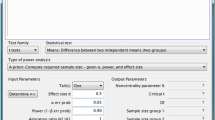Abstract
The variability in behavior has frequently been assessed using a measure known as the U-value. Of concern in this article were the limits and constraints on U-value as a measure of variability. The relation between the U-value and aspects of variability was examined using three sets of simulated data. Our analysis demonstrates that the U-value as a measure of variability on its own fails to capture repetitive patterns in the sequence of responding. The U-value was shown to reflect the evenness of the distributions of responses across the categories/options used; however, when the number of categories actually used by the participant differed from the total number available, the relation between U-values and the number of categories allocated with responses was shown to be nonlinear. It was also shown that the same value of U can represent different levels of evenness in response distributions over categories, depending on the number of categories/options actually used. These constraints and limitations are discussed in relation to how researchers might report on behavioral variability.



Similar content being viewed by others
References
Barba, L. S. (2012). Operant variability: a conceptual analysis. The Behavior Analyst, 35, 213–227.
Denney, J., & Neuringer, A. (1998). Behavioral variability is controlled by discriminative stimuli. Animal Learning & Behavior, 26, 154–162.
Doolan, K. E., & Bizo, L. A. (2013). Reinforced behavioral variability in humans. The Psychological Record, 63, 725–734.
Grunow, A., & Neuringer, A. (2002). Learning to vary and varying to learn. Psychonomic Bulletin & Review, 9, 250–258.
Hopkinson, J., & Neuringer, A. (2003). Modifying behavioral variability in moderately depressed students. Behavior Modification, 27, 251–264.
Machado, A. (1992). Behavioral variability and frequency-dependent selection. Journal of the Experimental Analysis of Behavior, 58, 241–263.
Machado, A. (1993). Learning variable and stereotypical sequences of responses: some data and a new model. Behavioural Processes, 30, 103–130.
Machado, A. (1997). Increasing the variability of response sequences in pigeons by adjusting the frequency of switching between two keys. Journal of the Experimental Analysis of Behavior, 68, 1–25.
Maes, J. H. R. (2003). Response stability and variability induced in humans by different feedback contingencies. Learning & Behavior, 31, 332–348.
Miller, G. A., & Frick, F. C. (1949). Statistical behavioristics and sequences of responses. Psychological Review, 56, 311–324.
Murray, C., & Healy, O. (2013). Increasing response variability in children with autism spectrum disorder using lag schedules of reinforcement. Research in Autism Spectrum Disorders, 7, 1481–1488.
Neuringer, A. (2002). Operant variability: evidence, functions, and theory. Psychonomic Bulletin & Review, 9, 672–705.
Neuringer, A. (2012). Reinforcement and induction of operant variability. The Behavior Analyst, 35, 229–235.
Neuringer, A., & Huntley, R. W. (1991). Reinforced variability in rats: effects of gender, age and contingency. Physiology & Behavior, 51, 145–149.
Page, S., & Neuringer, A. (1985). Variability is an operant. Journal of Experimental Psychology: Animal Behavior Processes, 11, 429–452.
Ross, C., & Neuringer, A. (2002). Reinforcement of variations and repetitions along three indepedent response dimensions. Behavioural Processes, 57, 199–209.
Souza, A. S., Abreu-Rodrigues, J., & Baumann, A. A. (2010). History effects on induced and operant variability. Learning & Behavior, 38, 426–437.
Stokes, P. D. (1995). Learned variability. Animal Learning & Behavior, 23, 164–176.
Ward, R. D., Kynaston, A. D., Bailey, E. M., & Odum, A. (2008). Discriminative control of variability: effects of successive stimulus reversals. Behavioural Processes, 78, 17–24.
Author information
Authors and Affiliations
Corresponding author
Ethics declarations
Funding
The analysis reported in the submitted manuscript forms part of the first author’s PhD thesis; no funding was received.
Ethical Approval
This article does not contain any studies with human participants or animals performed by any of the authors.
Rights and permissions
About this article
Cite this article
Kong, X., McEwan, J.S., Bizo, L.A. et al. An Analysis of U-Value as a Measure of Variability. Psychol Rec 67, 581–586 (2017). https://doi.org/10.1007/s40732-017-0219-2
Published:
Issue Date:
DOI: https://doi.org/10.1007/s40732-017-0219-2




